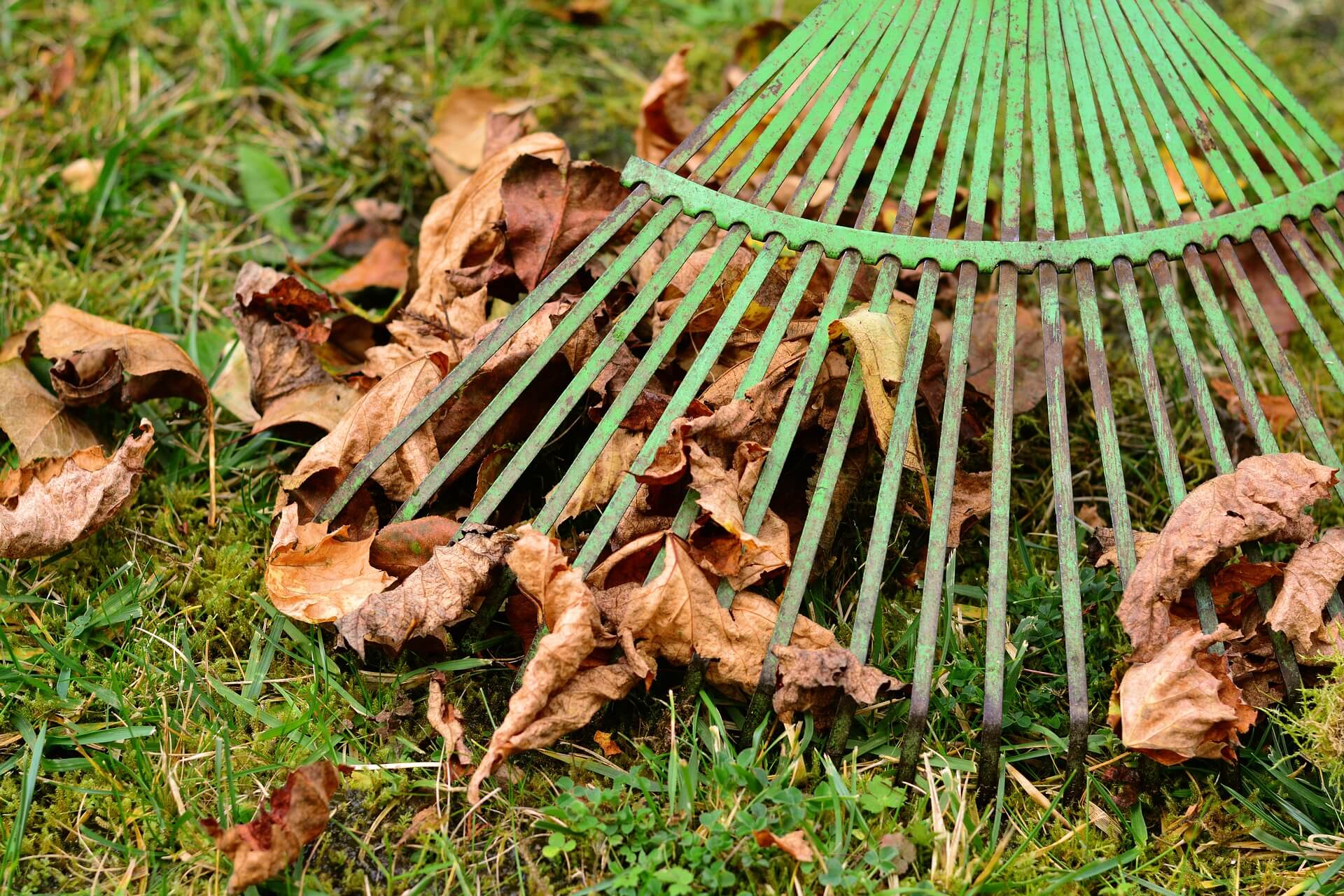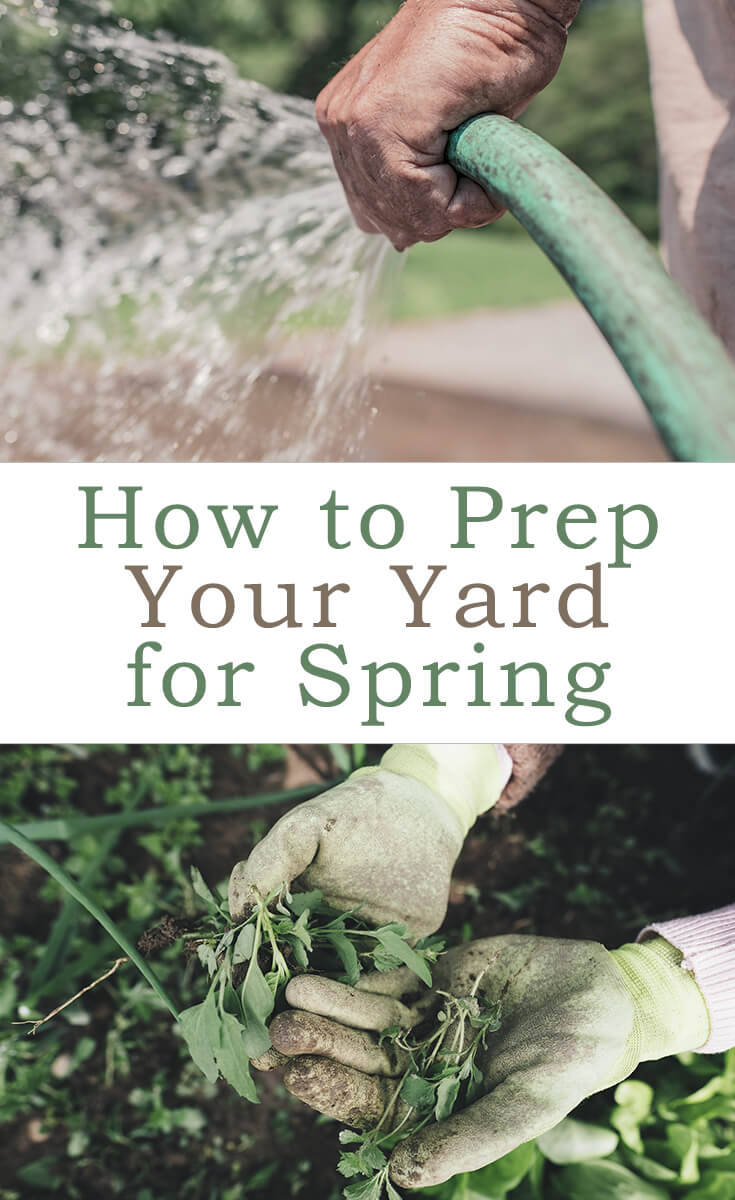The days are getting longer and the temperatures are rising. After months of bare branches and empty flower beds, it’s time to bring that drab old yard back to life!
Preparing your yard for spring doesn’t have to be difficult or expensive. Just a few tools and a little know-how will have your lawn ready for backyard BBQs, lawn games, and graduation parties in no time.
To Rake or Not to Rake?

There are two schools of thought in the great rake debate. Some say that you should rake up all the leaves on your lawn to prevent suffocating the grass. You can add the leaves to your compost pile, or put them in leaf bags to be picked up by your city’s composting service.
Others say that raking isn’t necessary. Instead, once the leaves are dry and crunchy, you can mow over them with a mulching lawnmower. The mower will chop those leaves into little bits which will then fall down among the grass, creating an insulating layer to help keep soil cool and healthy. According to research done at Michigan State University, using your leaves as a thin mulch layer can help to prevent weeds from growing in your yard, and may also decrease the need for fertilizer.
Whichever method you choose, make sure you’re doing something with those leaves to prevent a heavy leaf litter from smothering your grass as it tries to renew itself this spring.
Get Proficient in pH

Check your soil’s acidity levels with a simple test available at your local hardware or garden supply store. Acidity is measured on a pH scale of 0 to 14. Levels under 7 indicate acidic soil, while numbers over 7 indicate alkaline soil.
The ideal soil pH for grass is usually between 6 and 7, depending on the grass variety. But other plants prefer different pH levels. Hydrangeas, for example, need an acidic soil pH (under 5.5) to get the vibrant blue blooms that make them so popular.
If soil is too acidic, you’ll want to raise the pH with an additive like limestone or wood ash. If it’s too alkaline, lower pH with sulfur or an acidifying fertilizer.
Get Some Air

Aerating your lawn is a step that many people skip, to their lawn’s detriment. Aerating involves making small holes in your lawn at regular intervals. This allows oxygen, fertilizer, and water to more easily reach the roots of the grass. It also loosens tight, compacted soil, which is caused by all of that mowing and gardening — not to mention the games of catch on Saturday afternoons.
The best way to aerate your lawn is to use a motorized lawn aerator that pulls a “plug” of soil out from the ground. These are available to rent at your local hardware store, or you could hire someone to do the job for you.
Although there are other methods, like spiked sandals that you strap over your shoes to poke holes in the ground as you walk, the general consensus among yard-care experts is that these are not as effective. In fact, they can further compact already compacted soil.
Feed Your Hungry Lawn

Fertilizing your lawn regularly will provide the nutrients it needs to keep it green and lush. Generally, a basic 5-5-5 fertilizer will do the trick for your lawn (unless you have a pH issue, as discussed above). The numbers indicate the quantity of certain nutrients present per 100 pounds of fertilizer. In the 5-5-5 fertilizer, there are five pounds of Nitrogen, Phosphorous, and Potassium per 100-pound bag.
For best results, water grass thoroughly the day before you fertilize. After grass has dried overnight, distribute fertilizer evenly through the lawn using a broadcast spreader or a drop spreader. Then, water the grass again. This second watering will help to rinse fertilizer from the grass blades, and make sure it soaks into the soil. But don’t overdo it! You don’t want to wash your fertilizer away.
Prevent Weeds Before They Start

Treat your lawn with a pre-emergent herbicide to prevent weeds before they’re able to germinate. If you need to sew seed grass this spring, make sure that it’s well-established before using this kind of herbicide, or it could prevent your grass seed from germinating as well.
The application must be done early in the season before weeds are visible in your lawn, as it won’t have an effect on existing weeds. Here you can find a helpful map that shows when you should apply your herbicide, based on your climate zone.
Mulch is a Must

Add a layer of mulch to flower and vegetable beds. Refreshing mulch each season will help to keep soil cool and moist throughout the summer. Plus, it will make your garden beds look neat and fresh. As the mulch breaks down over time, it will add organic matter to the soil, keeping it healthy for your plants.
Just make sure the mulch doesn’t get too deep. Keep it under 3” thick to prevent suffocating your plants.
Call in the Pros

Every 2-3 years, call in your local arborist to check out the trees on your property. These professionals will look for damaged limbs, diseases, or pests, and make recommendations on how to deal with them. Regular check-ups on your trees can help to prevent a nasty surprise during a violent summer storm.
Check on the Irrigation System

Take a look at your hoses, hose bibs, and hand sprayers to check for leaks or cracks. A damaged irrigation hose can waste gallons of water — and plenty of your money — as well as preventing the plants at the end of the line from getting the water they need.
Maintain that Mower

Make sure that your lawn mower is in tip-top shape for the season. Give it an annual refresh by changing the oil, replacing or cleaning the air filter, and switching out the spark plugs.
Remove any debris from the underside of the mower, and make sure there is a fresh cutting blade installed. The blade needs to be sharp to ensure that it cuts the grass rather than tearing it.
Get Mowing…
But don’t go crazy! For your first mow of the season, taking off too much length can prevent abundant growth through the rest of the season. A good rule of thumb — never take off more than ⅓ of the grass height at a time. Chopping too much at a time is a shock to the plant, and can damage it permanently.
In fact, you never want to cut your grass too short. Grass blades need to be long enough to soak up all that sun and keep their roots healthy. If you’ve cut the grass all the way down to the yellow, you’ve gone too far.
Get That Patio Ready
With a newly refreshed yard, you’ll want to sit outside to enjoy it! Give the deck a good sweep to clear it of leaves, pine needles, and debris. Then, rinse it off with a deck cleaning solution appropriate for your deck’s material.
Bring the patio furniture back out, and add some potted plants to integrate your seating area into the larger landscape. Now make some lemonade, kick back, and get ready to enjoy your lush green lawn all summer long.


